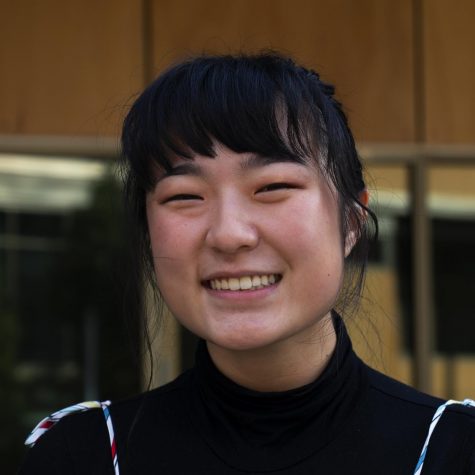The Witches of Issaquah
THE WITCHES WHO COULD NOT BE BURNED. Witchcraft is a hobby and a lifestyle, still practiced by many today.
October 30, 2019
The air has begun to form a steady chill as the sun retreats faster and faster with each passing day. Wind shake the evergreens that surrounds our town and the lines between reality and the realm of the unknown seem to be slowly overlapping. While it is not yet Oct. 31, and the costumed ghouls have yet to come from within us all, there is one Halloween icon that deserves a promotion from their limited fall-time appearance. They are magic in its most classic form, and they are greatly misinterpreted to this day. This costumed concept deserves a more in-depth and modern take than the stereotypical pointy hat and broomstick, because the role of the witch is more than what society has made it to be.
First, let us take down some misconceptions of witches. “ People tend to generalize witchcraft as a Satanist practice, which isn’t true at all,” says junior Skylar Wachtman. They continue, “[People] also see witches as delusional or uneducated. Recently there’s been sort of an association of sorts between the anti-vaxxer movement and witches, but most witches don’t condone replacing medicine with witchcraft.” Negative stereotypes like these can often be traced back to the Salem Witch Trials in 1692, in which—according to an article by the New Yorker—“the Massachusetts Bay Colony executed fourteen women, five men, and two dogs for witchcraft.” Of course, not just historically, but in the modern era too, a fictitious idea of the witch is heavily perpetuated. Think of classic Nineties flicks like “The Craft,” which although is inspired by the “Rule of Three”–a law in Wicca that states that whatever one puts out into the world, negative or positive, it will return to them threefold–it still enforces the idea that those who practice witchcraft will ultimately use it to harm others. Raised from a young age with the knowledge of magick-the term “magic” is spelled with a “k” at the end for those who practice-sophomore Dasha Hamlin says, “I like how [witchcraft] brings you a semblance of control over the things in your own life, as well as the freedom to express your own beliefs.” Agreeing with Hamlin, senior Hadassah Klinger describes their relationship with practicing, saying, “In witchcraft, there’s a lot of grounding and centering. You focus a lot on being present in the moment. You focus a lot on learning about and loving yourself. You focus a lot on appreciating nature and the world around you…. In general, humanity could learn a lot more about being gracious and accepting of individual life.”
There are multiple ways that practicing witches, both novice and knowledged, connect with the world around them. For senior Serena Turrney, who identifies herself to be a “Green witch,” it is through the flora of the world around her. Turrney says, “[Plants are] my area of expertise. I think one of my favorite flowers are dandelions, because they’re everywhere and they’re really cheap, and a lot of it can be used for healing, and I love making crowns with them and they’re really pretty… And of course there’s sage, everyone knows sage. But there’s also thistles, which are really good for energy cleansing.” Another way that the modern witch can practice is through altars. For some students it is a larger scale, like senior Andres Mez-Eades who describes her area to be “like a small shelf area with a crap ton of crap. It’s just getting bigger and bigger because I get more stuff, but there’s crystal, incense, candles.” For Wachtman, it is a smaller production, described as “a travel altar, which will have sunstones, a tiger’s eye crystal, and sun water in it.” In the mainstream media, there has been an introduction into what certain rocks and minerals can do for the body and mind, but in practicing witchcraft, it can be one of the major staples. Klinger says, “[favorite crystals] right now are; selenite, meant for clearing energy, and protection; amethyst for stress relief, emotional balance, and alleviating negative emotions; rose quartz, centered around love; angelite, which enhances psychic abilities and spiritual connections; red jasper for grounding, which helps my post traumatic stress disorder as its connected to the root chakra, and rainbow moonstone, which helps to embrace life changes and transitions.” The purpose of these specific stones are often to bring forth certain energies or to dispel others, a similar use to certain plants and herbs.
After interviewing multiple students who practice the craft, from the learned witches to the “baby witch,” a new reality began to slowly dawn. Witchcraft, whether found in the modern or historical era, is stigmatized to cult imagery and demonic stereotypes not because of the content–which as described, is mostly centered natural elements and a steady relationship with the self and the whole–but instead because of what witchcraft meant for those who were practicing it. Ideas of self improvement and inner peace, seeking a deeper role of yourself in the world and healing, are actually quite radical in this high strung era of stress. Historically, we see witches mischaracterized as sinister and evil, but it is important to think of whose voices are the ones that are immortalized by history. In the classic play “The Crucible,” based off of real accounts during the Salem Witch trials, Tituba is a South American Native slave, and one of the first to be accused and pressured into a confession. So quickly were the marginalized women of Salem antagonized, but we rarely get to read of accounts from the minds of these women and the stories behind what brought them to that cruel court. They lay in unmarked graves, with untold stories and unseen perspectives. Were they unheard voices, seeking justice for themselves or chasing a truth? Did they find a deeper meaning in life, a sense of empowerment in the world around them granted through this once forbidden sin, and were ultimately chastised for it? These are all the questions with answers lost to history.
The role of the witch is of one who seeked to improve through the workings of the self, only to be met with condemnation and fear. Whether it is the 1600s or the 2010s, the practicing of witchcraft will still carry a stigma. However, ultimately what beats prejudice is education, and gaining insight into the unknown is a way to break down the demeaning ideas of what witchcraft is. With this newly gained knowledge, tell the world what it actually means to be a witch, and make this Halloween not just an entertaining one, but an informed one.




